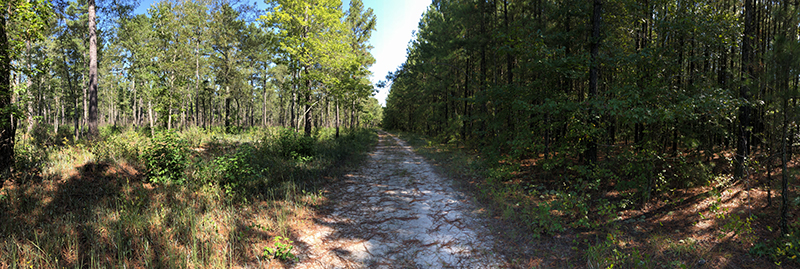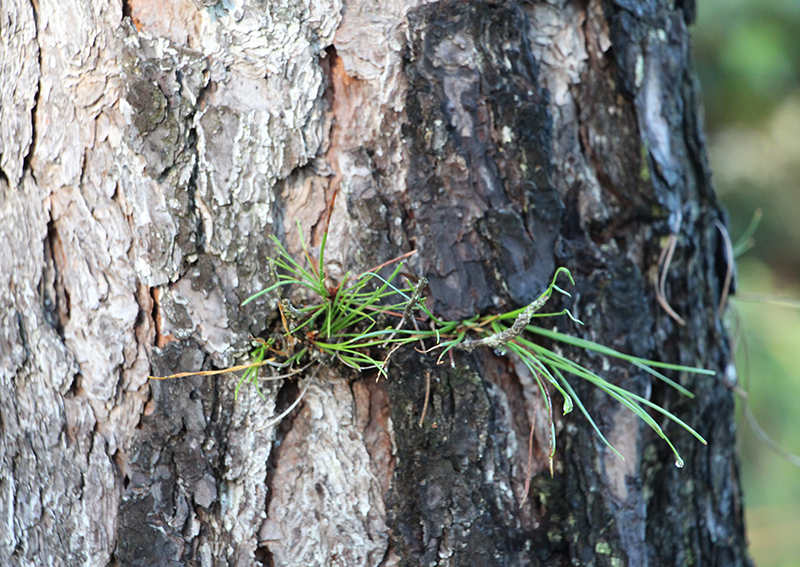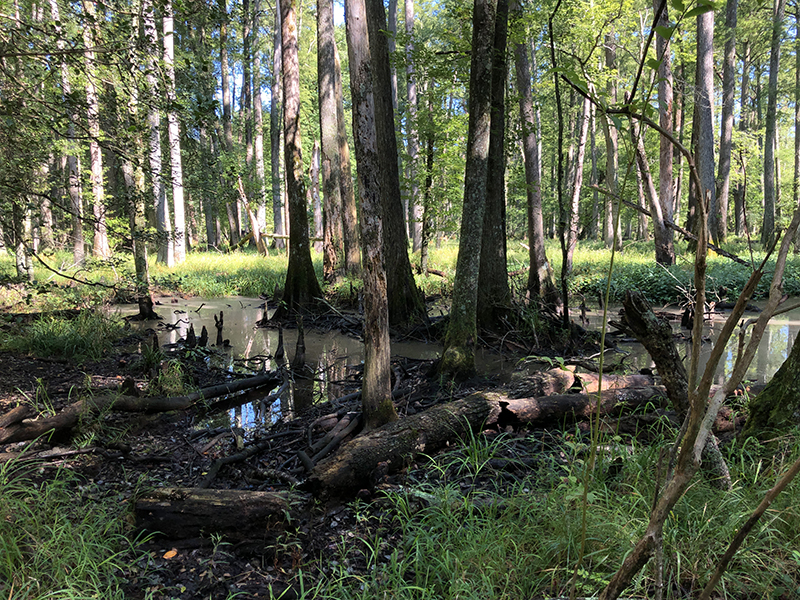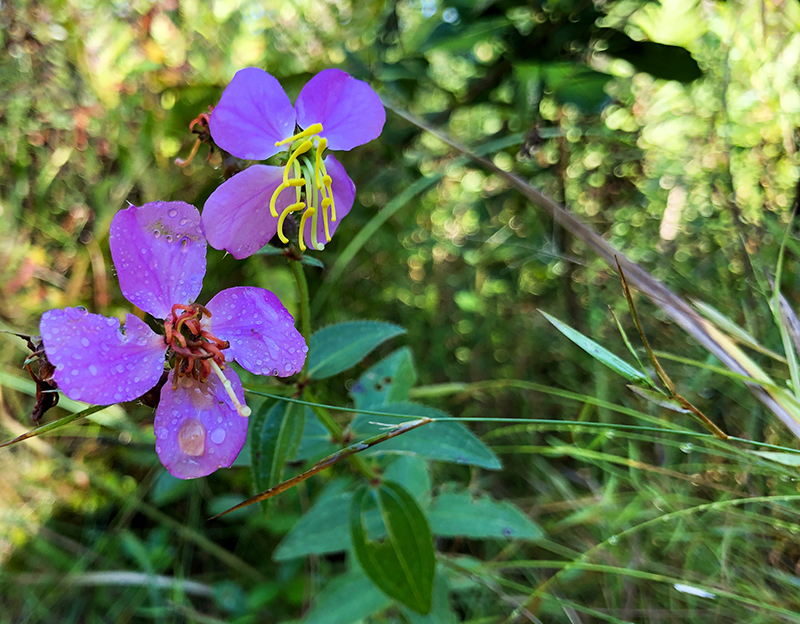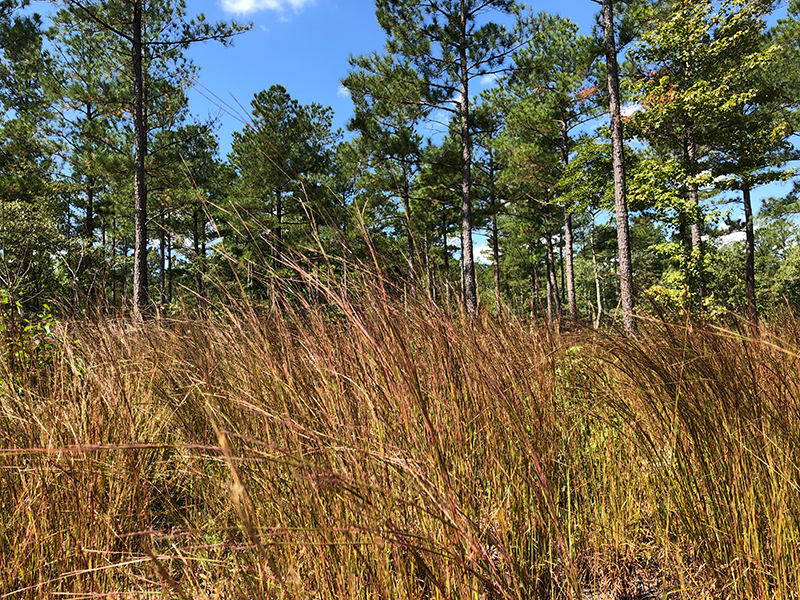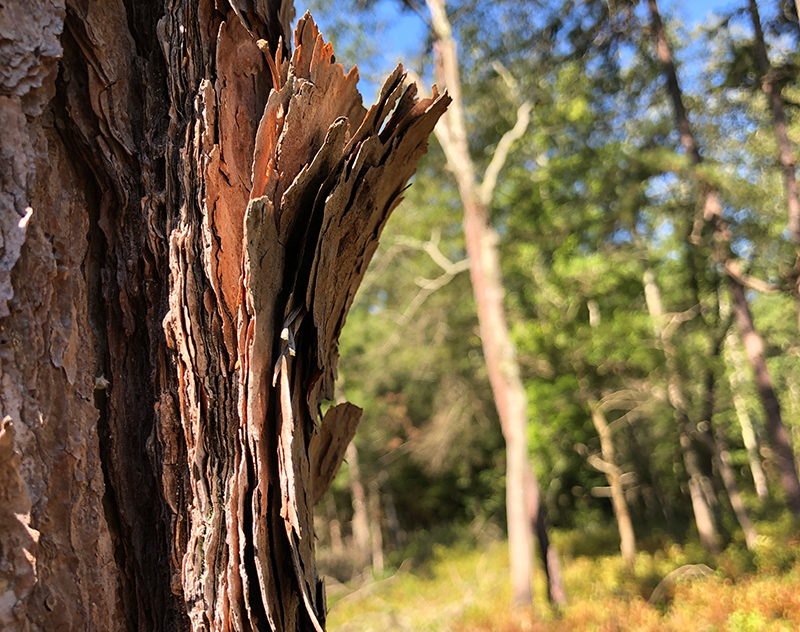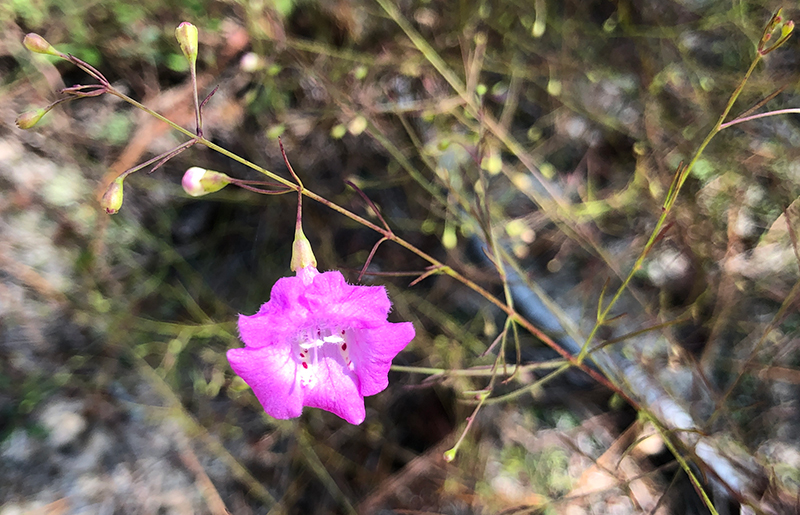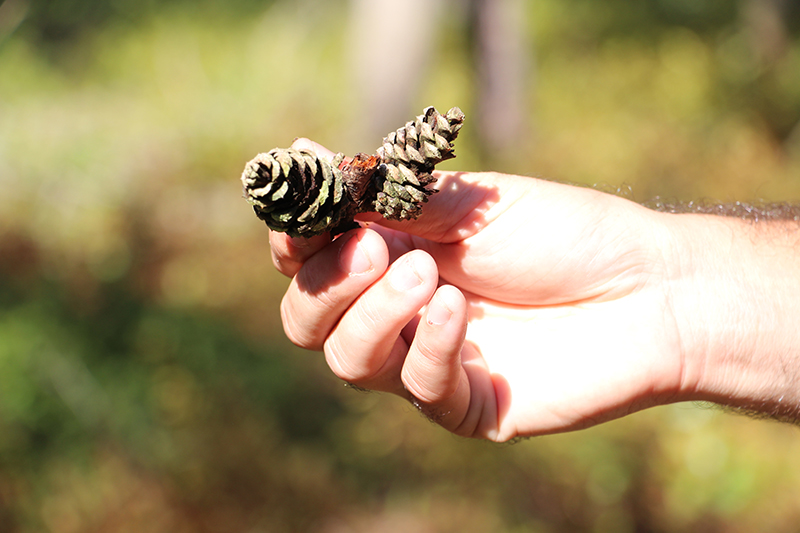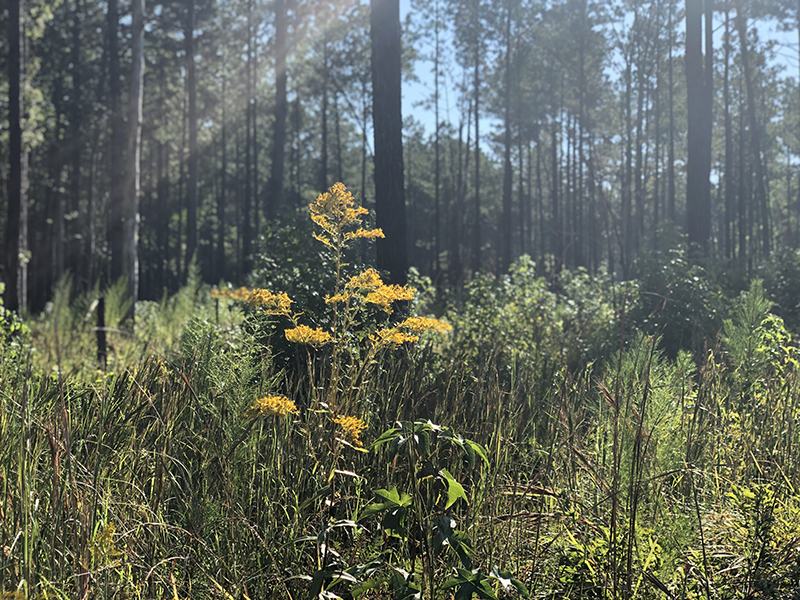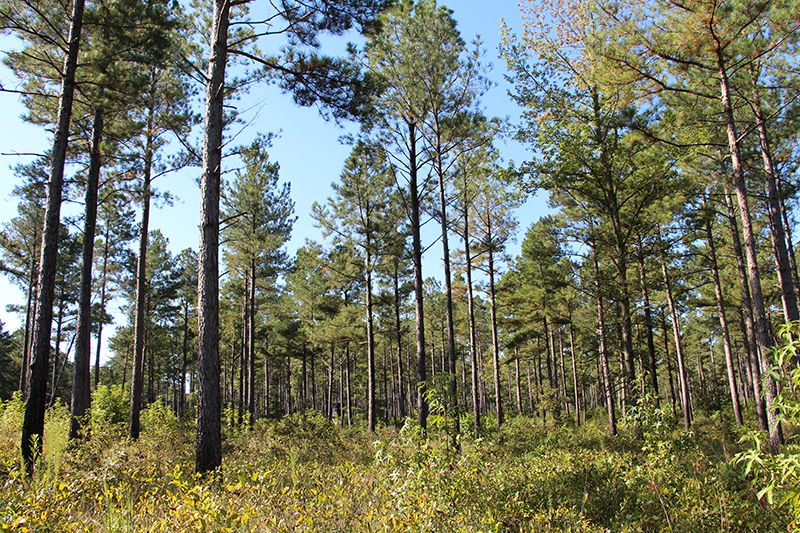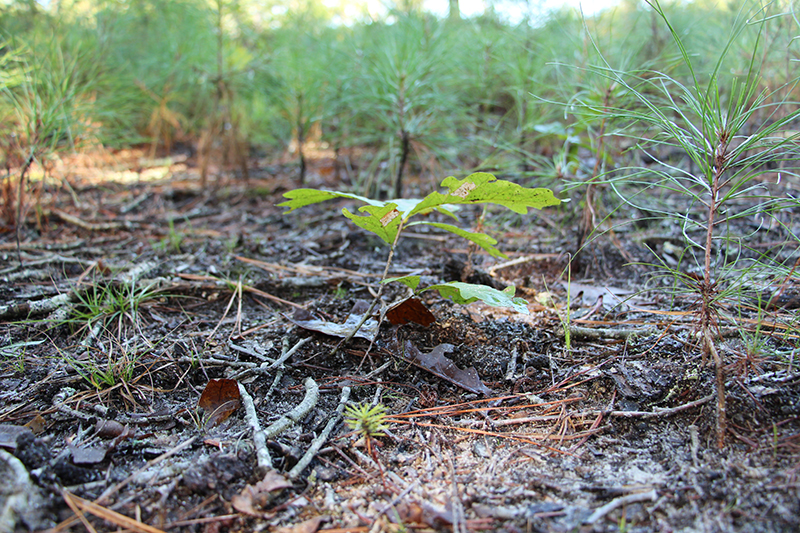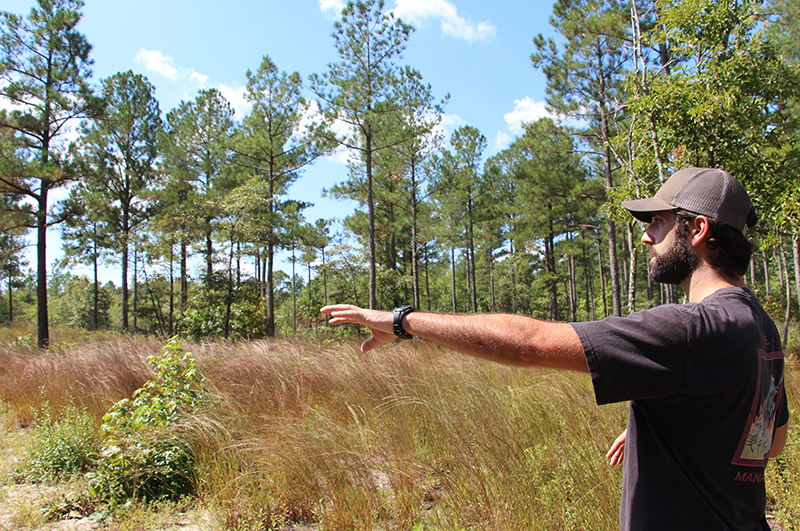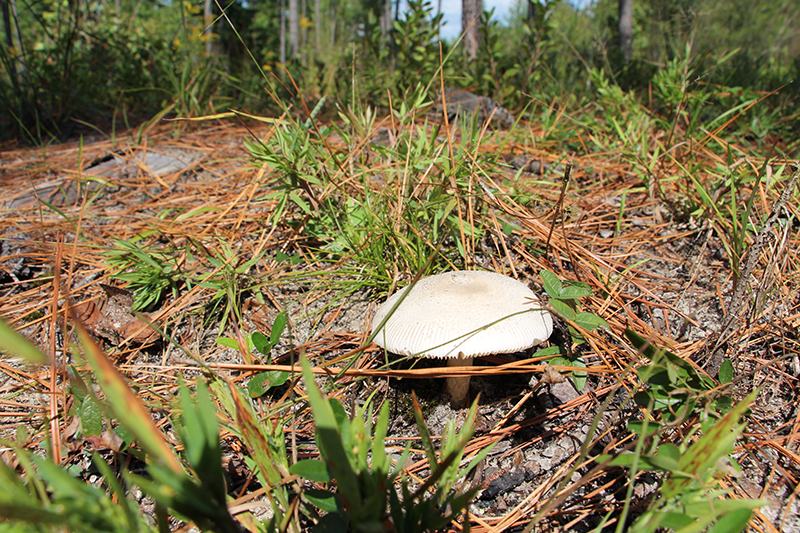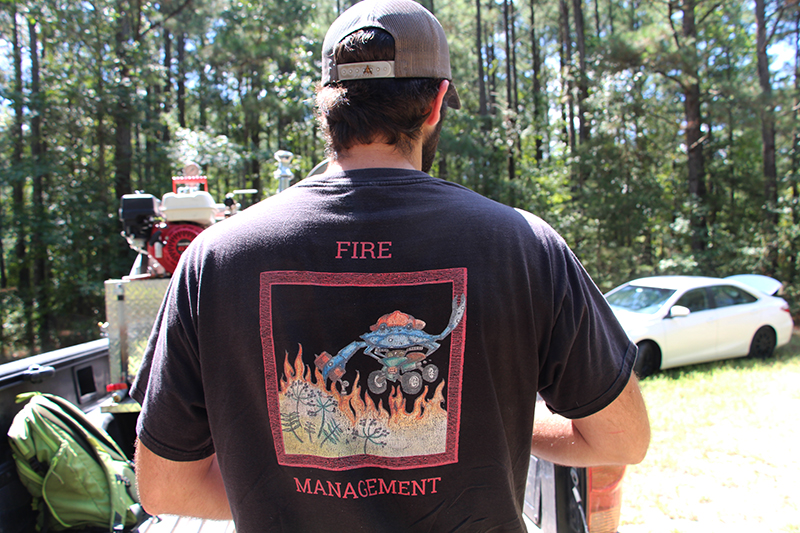Witnessing Regneration
By Amy Nelson
After interviewing The Nature Conservancy’s Deborah Landau and learning about the organization’s efforts to return fire to ecosystems throughout my home state of Maryland, I was curious to know what post-fire regeneration looked like up close. I decided to visit the Nassawango Creek Preserve, which TNC has been actively managing with fire and other restoration techniques since 2008. The preserve is located in the “mar” portion of the Delmarva Peninsula, a 170-mile long hunk of Mid-Atlantic Coastal Plain that contains portions of Delaware, Maryland, and Virginia. The peninsula is bordered to the west by the Chesapeake Bay and to the east by the Atlantic Ocean and Delaware Bay.
Historically, many ecosystems on the peninsula evolved with frequent, low-intensity burns ignited by lightning or Native American land management practices. As in so many other regions of the continent and world, however, fire was heavily suppressed for nearly a century.
The Nassawango Creek Preserve is the largest of the Conservancy’s 30 preserves in Maryland, with nearly 10,000 acres in Conservancy ownership. It is home to nearly 90 plant and animal species that are rare, threatened, or endangered in the watershed.
I was guided through the Preserve’s Johnson Tract by Chase McLean, a conservation steward for The Nature Conservancy. The Johnson Tract, which was formerly a loblolly pine plantation, features many unique ecosystems, including inland dune formations (also known as ancient sand ridges) and one of the northernmost remaining examples of a bald cypress swamp. TNC has been thinning and conducting prescribed burns on different plots in the tract on a rotating cycle of once every two or three years. In the process, they are slowly restoring a diversity of habitats that existed on the property long before the arrival of Europeans. This includes vegetation such as short leaf, Virginia, and pond pine, red oak, hickory, persimmon, bluestem, and high bush blueberry. Some of the plots I saw were burned in the spring of 2021; others just four months before my visit, in the spring of this year. The frequent, controlled burns not only keep the forest open and manage invasives that take advantage of newly created space, they also help manage native non-fire adapted trees like sweet gum and red maple, which can come in quickly and dominate.
To travel through this part of the preserve is to experience the opening of a forest and the resulting robust explosion of new growth- from the sandy soil, the charred forest floor, even the trunks of trees. It is to understand how the bald cypress swamp served as a natural fire barrier for the native people who must have inhabited this place long ago and burned it so wisely. It is to practically see nitrogen returning to the soil. It is to gain a sense of what a newly burned snag means for a redheaded woodpecker… what a four-month old savannah offers a hungry raptor… or what the newly open sands provide for the eastern pine barrens pine beetle. It is to finally be able to imagine that yes… people once rode horses through these woods… perhaps they gathered hickory nuts and blueberries here… or hunted the Eastern wild turkey or bobwhite quail in the grassy openings.
Before I departed Nassawango, I asked Chase what it feels like to implement a prescribed burn and then watch what happens aftewards. He was kind enough to share his thoughtsL
My visit to Nassawango Creek Nature Preserve was an eye- and mind-opening experience, and I left with deep gratitude—not only for the land’s Indigenous inhabitants whose management practices made so much sense—but also for The Nature Conservancy and people like Chase McLean and Deborah Landau who are so deeply dedicated to ecological restoration.
